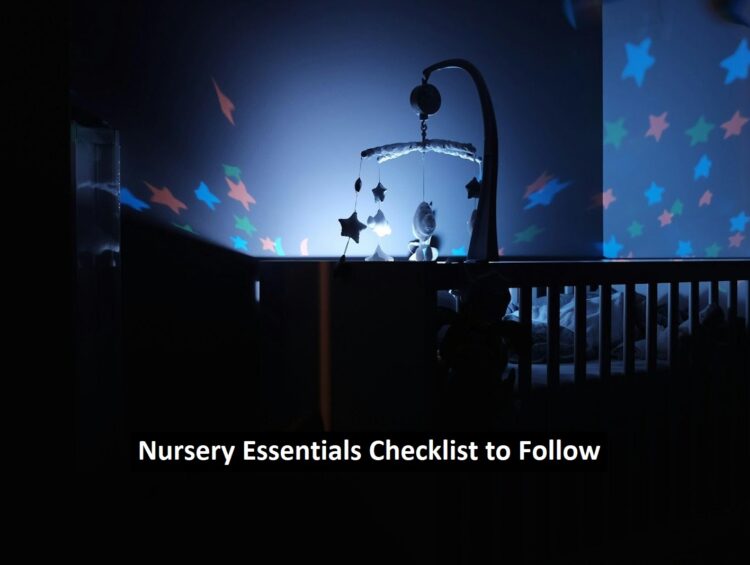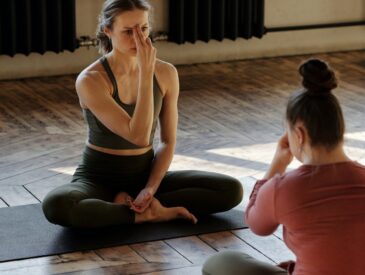Prenatal preparation is a beautiful process, but it may also be stressful. Designing a comfortable nest for the baby’s first years is a top priority for expectant parents. Here’s the detailed nursery essentials checklist for creating the best environment for your little one.
Safety First
Consider a standard, CPSC-approved crib and a tight, flat mattress that fits snugly without gaps. Select a crib that is not older than 2 years. The slats must be 2 3/8 of an inch apart, no more. Don’t use drop-side cribs, which have been banned due to safety concerns.
A reliable baby monitor is a nice helper for monitoring the baby when they are sleeping. Choose a monitor with good sound quality and, if needed, video output. Attach smoke and carbon monoxide alarms in or near the nursery. Use outlet covers and manage cords securely to avoid accidents as your baby grows more mobile.
Sleeping Essentials
It’s important for both the baby and the parents to have a good night’s sleep. Invest in several fitted sheets and waterproof mattress covers for the crib mattress. Don’t place loose blankets in the crib to prevent suffocation. Instead, use sleep sacks or swaddles to cover your newborn.
Blackout curtains are great for day naps and early bedtimes. They create a conducive sleep environment at any time of the day. Try out a white noise machine to block out household noises and create a comforting background for your baby to sleep in.
Changing Station
Having a well-equipped changing station means that diaper changes are done stress-free. Select a changing table that has safety straps. Place the changing pad on the top of a dresser. Ensure all the items required are within reach so that you don’t leave the baby unattended.
A diaper pail assists in preventing the spread of smell. It also helps in disposing of diapers. Keep diapers, wipes, and diaper cream in a diaper caddy for easy access. Get additional supplies within reach for easy replacement or replenishment. Expect to spend a lot of time at the changing station, so it should be as functional and comfortable as possible.
Infographic provided by Scott Marshall Injury Attorney, one of the top bicycle accident lawyers in FloridaFeeding Area
For those frequent feeding sessions, a comfortable chair is paramount, whether you are breastfeeding or using a bottle. The chair provides adequate support to the back and the arms. A nursing pillow assists in positioning the baby properly and relieve pressure on the arms and the back.
Have burp cloths within easy reach so your clothes won’t get stained by the spit-up. A small side table or caddy could be used for things like water, snacks, or your phone during those long nighttime feedings. Having a comfortable and adequately stocked feeding area will make this bonding time more productive and enjoyable for both you and your little one.
Read: 5 Steps to Find the Best MBE Staffing Services
Storage and Organization
Storage solutions help keep the nursery neat and organized. A dresser offers sufficient storage for clothes. It can also be used as a changing table if required. Consider closet organizers to utilize the vertical space and keep small clothes visible and easy to reach.
Don’t neglect toy storage. When you are going to get more items as your baby grows, get bins, baskets, or shelves in advance. Another necessity is a laundry hamper to collect dirty clothes. It will prevent the messy stuff from spreading all over the house. Proper organization will help you to avoid loss of time and stressful situations in the long run.
Comfort and Soothing
A rocking chair or glider is a must in the nursery as it’s used for feeding, comforting, and interacting with the baby. Select one that is suitable for wearing for long hours and one that the mother can easily put on and off while carrying a baby.
Babies can benefit from pacifiers when they are irritable. Get a few at hand but introduce them only after breastfeeding is well-established. A mobile above the crib can be a source of interest and amusement for the little one. Choose a gentle light for the nighttime diaper change and feedings so as not to disturb the newborn.
Health and Grooming
A baby bathtub makes bath time more enjoyable and safe. Select one that is slip-resistant and has a proper drainage system. A thermometer is quite important when it comes to checking on the health of your little one. Digital ear or forehead thermometers are convenient since they only require a few seconds to take the temperature.
Buy a pack of baby nail clippers or scissors to care for the baby’s nails. Newborns have sharp nails that can easily scratch themselves. Some of the basic items that should be in the first aid kit include newborn-friendly acetaminophen, nasal aspirator, and baby-safe adhesive bandages. Always consult a pediatrician before giving your child any medication.
Clothing and Linens
Get plenty of casual, practical, and easily washable clothing. Sleepers that open from the bottom with zippers are easy to manage for several diaper changes. Don’t forget mittens for the little hands and socks for the feet to remain warm during the cold season. Avoid clothes that have small buttons or ornaments that may be a potential choking hazard.
Muslin cotton blankets are ideal for wrapping and tummy time. They can also be used as a light cover during feeding. Make sure you have lots of wash clothes and hooded towels ready for bath time. When washing baby’s clothes and linen, use soft, non-irritating, and fragrance-free detergents.
Play and Development
Help your baby develop properly with toys and games suitable for his or her age. A play mat or activity gym helps with tummy time and reaching exercises. Soft toys that are colorful and have varying textures are great for your baby’s senses and motor skills.
For young infants, board books with high contrast are ideal. Babies should be read to from the time they are born to facilitate language development. Soft blocks or rattles are top-notch for grasping practice. At this age, your baby doesn’t require fancy and expensive toys – just basic items.
On-the-Go Items
Although these are not nursery items, but having such essentials makes outings with your baby much easier. A diaper bag that contains all the essentials is quite helpful when you’re on the go. Carry diapers, wipes, spare clothes, and a portable changing mat.
Choose a high-quality car seat that fits your baby’s age and size. Make sure it’s properly installed before placing your baby in. A durable stroller helps in managing walks and other errands. Think about your lifestyle when deciding between full-size strollers, travel systems, or lightweight strollers.
A bottle warmer can be a convenient trinket for preparing feeds, especially during night wakings. A humidifier can help keep the air moist. It’s a great servant in case your baby has congestion or dry skin.
A diaper cream applicator keeps your hands clean during diaper changes. Some parents find a wipe warmer helpful to avoid startling the baby with cold wipes during changes.
Conclusion
There are many things to consider when preparing a nursery, from a custom name blanket to a rocking chair. But first, you should concentrate on what is most important. The needs of every family are different, so use this checklist as a guide. The most important parts are safety, comfort, and attention. When setting up the nursery, you should understand that your baby’s needs are going to change quickly in the first year. So, you should remain adaptable and be willing to change as your child develops. Following this checklist will help prepare the best environment for your little one to grow in.





